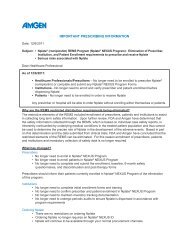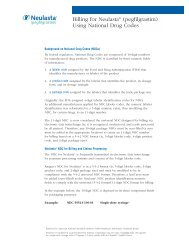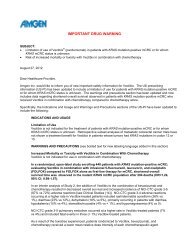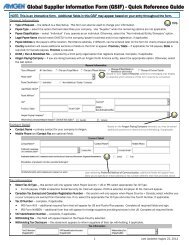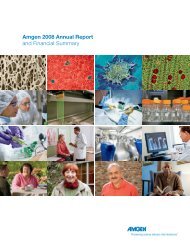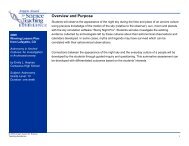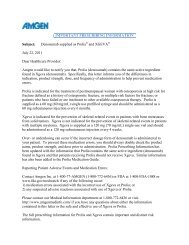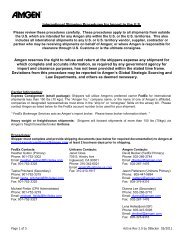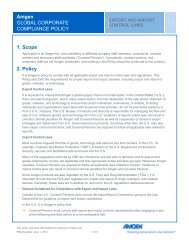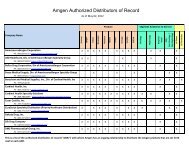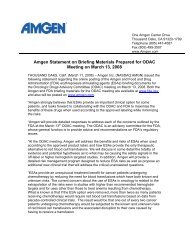Re: National Coverage Analysis for Erythropoiesis ... - Amgen
Re: National Coverage Analysis for Erythropoiesis ... - Amgen
Re: National Coverage Analysis for Erythropoiesis ... - Amgen
Create successful ePaper yourself
Turn your PDF publications into a flip-book with our unique Google optimized e-Paper software.
<strong>Amgen</strong> Comments on CAG-00413N<br />
July 16, 2010<br />
Page 2 of 15<br />
safe and effective use of our products. <strong>Amgen</strong> remains steadfast in our commitment to working<br />
with all stakeholders to provide objective, rigorous, and evidence-based in<strong>for</strong>mation.<br />
We are attentive to the concerns of CMS regarding the appropriate use of this class of products.<br />
On March 24, 2010 <strong>Amgen</strong> participated in the Medicare Evidence Development and <strong>Coverage</strong><br />
Advisory Committee (MEDCAC) meeting regarding the use of ESAs in treating anemia related<br />
to chronic kidney disease (CKD). The MEDCAC meeting served as a valuable <strong>for</strong>um to both<br />
explore and better understand the available clinical evidence regarding the treatment of anemia<br />
related to chronic kidney disease. Following the March MEDCAC meeting, CMS opened an<br />
NCA and requested public comments about the evidence regarding the effects of ESAs on<br />
health outcomes in adult CKD patients, both on dialysis and not on dialysis. Below, we provide<br />
a brief overview of evidence supporting the benefit:risk profile <strong>for</strong> ESAs, discuss key points<br />
underlying the available evidence regarding the effects of ESAs on health outcomes, and clarify<br />
misrepresentations and misinterpretations of the available evidence regarding the use of ESAs<br />
raised in the MEDCAC process. In addition, we are supplying CMS with a detailed summary of<br />
the current clinical evidence relevant to the agency’s NCA (see Appendix A).<br />
In determining coverage policy <strong>for</strong> ESAs, we urge CMS to ensure that policy decisions are<br />
evidence-based and aligned with FDA-approved product labeling, and avoid coverage policies<br />
that are based on unsupported or inappropriate extrapolations of data from existing trials and<br />
studies to clinical practice situations that may differ substantially. In 2007 the benefits and risks<br />
of ESA therapy <strong>for</strong> the anemia of CKD were discussed at a joint meeting of FDA’s<br />
Cardiovascular and <strong>Re</strong>nal Drugs Advisory Committee (CRDAC) and Drug Safety and Risk<br />
Management Advisory Committee (DSRMAC). An examination of the optimal use of ESAs was<br />
conducted and product labeling was changed to reflect these deliberations. Since 2007, the<br />
only new clinical trial in<strong>for</strong>mation on the use of ESAs in CKD is from the recently reported Trial<br />
to <strong>Re</strong>duce Cardiovascular Events with Aranesp Therapy (TREAT) study; FDA has signaled its<br />
intention to proceed with a comprehensive review of TREAT and other evidence later this year.<br />
<strong>Amgen</strong> looks <strong>for</strong>ward to this 2010 FDA CRDAC meeting, where the full range of evidence on<br />
ESA benefits and risks can be discussed. The CRDAC deliberations may in<strong>for</strong>m changes to<br />
product labeling, and thus, any deliberation of coverage policies should ultimately be consistent<br />
with product labeling.



